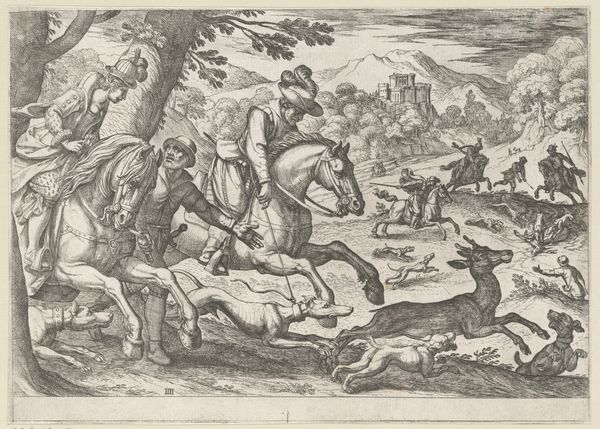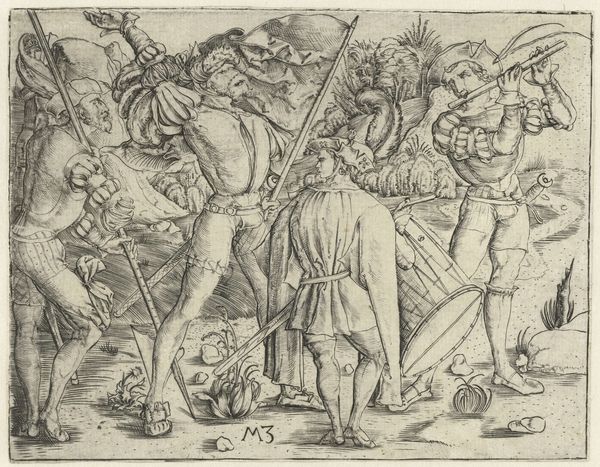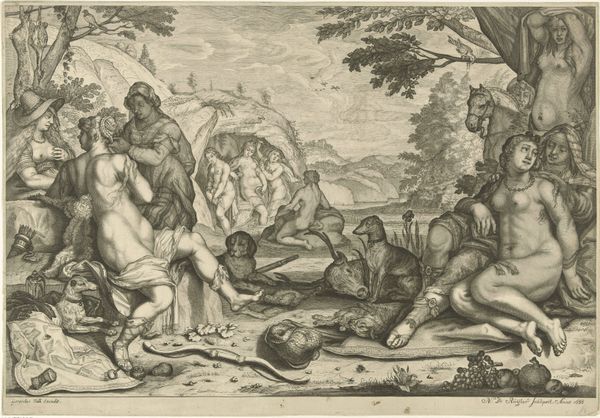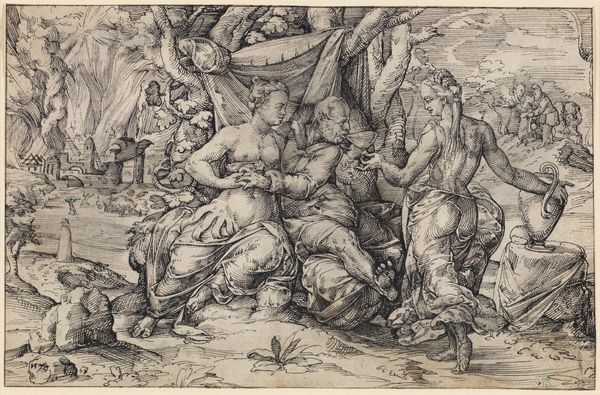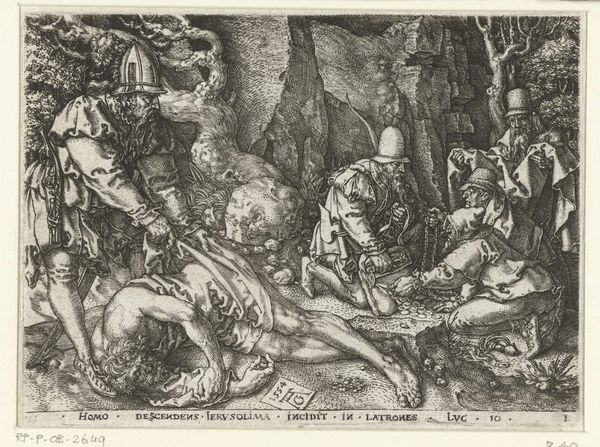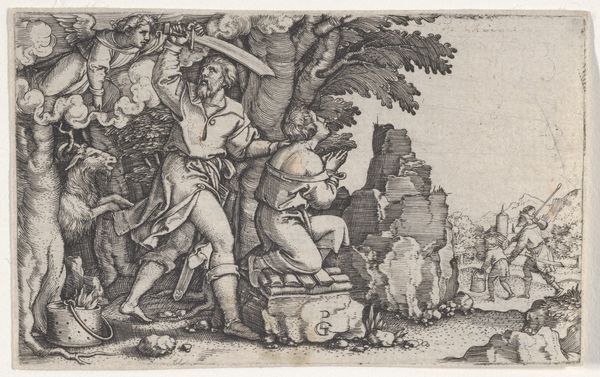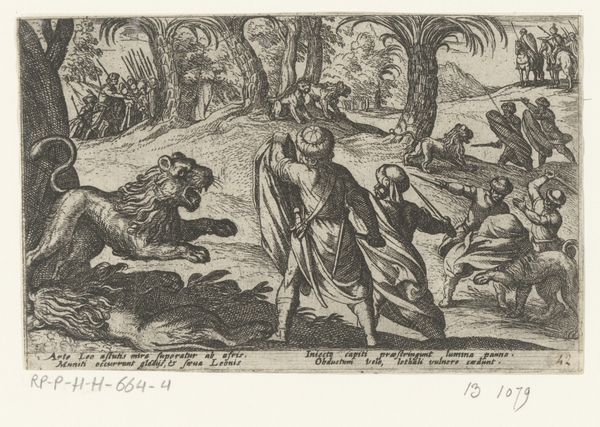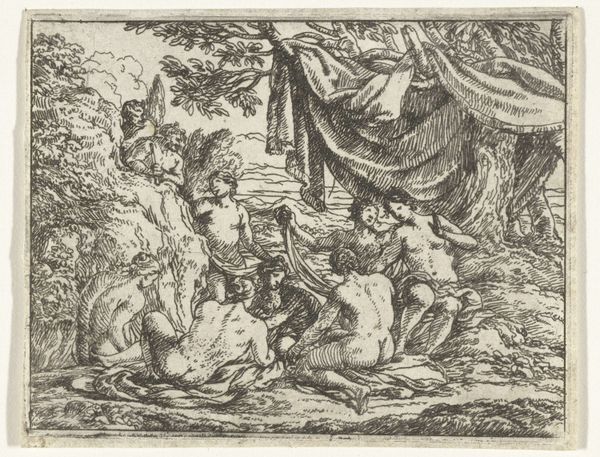
print, engraving
#
narrative-art
# print
#
landscape
#
figuration
#
11_renaissance
#
genre-painting
#
history-painting
#
northern-renaissance
#
engraving
#
realism
Dimensions: height 76 mm, width 112 mm
Copyright: Rijks Museum: Open Domain
Georg Pencz created this tiny etching, now in the Rijksmuseum, sometime between 1500 and 1550. It illustrates the parable of the Good Samaritan. A traveler is beaten and left for dead, and while others pass him by, a Samaritan stops to help. What does it mean that Pencz, a German artist, chose this subject? The parable was often invoked in discussions of social responsibility. In the context of the Reformation, the image may carry a critique of religious institutions and social norms. Perhaps the artist felt that the church was failing in its duty to care for the less fortunate. Or the print could be seen as promoting a more personal and direct expression of Christian charity, challenging established hierarchies. To interpret this artwork more fully, we need to understand the history of religious reform in 16th-century Germany. The work reminds us that understanding art requires a broader understanding of the social conditions in which it was made.
Comments
No comments
Be the first to comment and join the conversation on the ultimate creative platform.

